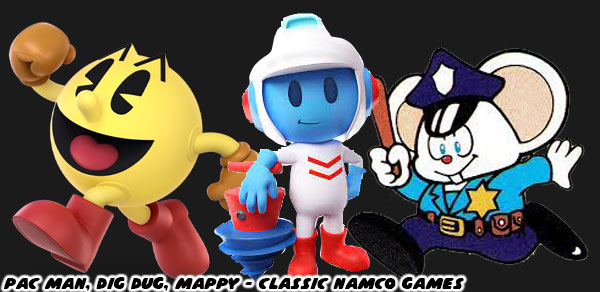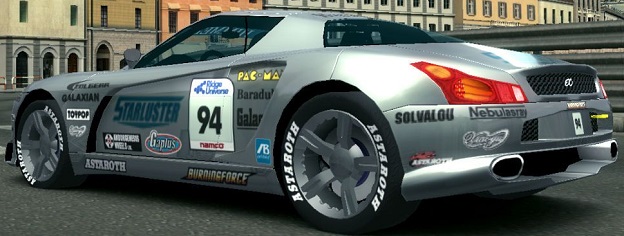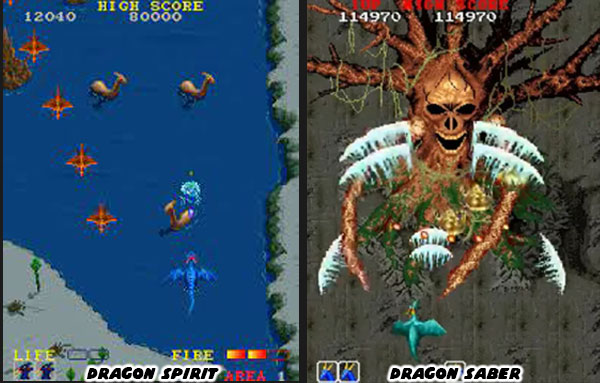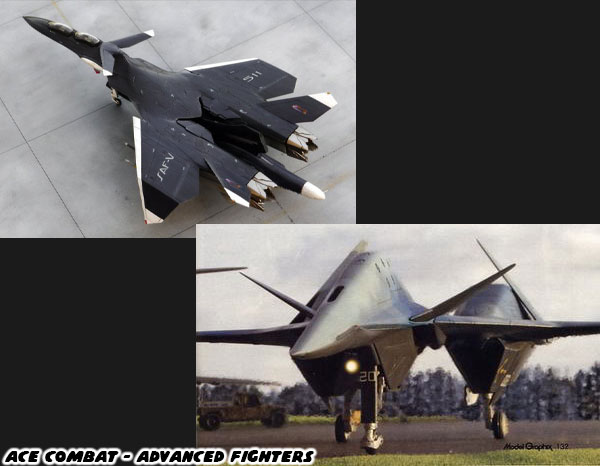Namco had lost a fantastic design team to Sega. Those that stayed with the company were willing to create racing games but lacked experience and insight with the various types of racing genres. The group of developers still managed to keep the Ridge Racer series going, and moreover they improved on every element of the game. Rave Racer was a bold concept for the arcades and Ridge Racer Revolution was the first chapter for the consoles. The focus on the series from that point on was owed to the legacy of Namco.

From its inception players noticed that the sponsor logos on the Ridge Racer cars, as well as the in-game billboards were pulled from other Namco games like Dig Dug and Pac Man. These were things that the company had pioneered a decade earlier in Pole Position. The use of familiar icons was a good technique to make the sport cars appear like real racing cars and was a way of getting non-race fans to take a closer look at the game. Instead of paying an actual company the rights to use their logos the developers simply reworked titles of arcade hits into the livery of each racing team. In fact the names for the rivals in the first two Ridge Racer games was pulled from Namco canon. The various rival cars on the track included RT (Racing Team) Xevious, RT Solvalou, RT Mappy, Galaga RT, RT Bosconian and RT Nebulas Ray. Long time arcade fans would recognize many of those names as the hits that put Namco on the map.

Namco was like many other Japanese developers in that it did not allow its employees to get top billing on any game. If there were credits in a game many developers did not use their actual names but instead went by nicknames, others were simply credited as "All Staff." The legacy of these developers would be celebrated on every car in the Ridge Racer series. It turned out that the people that worked on Dig Dug, Pac Man, Xevious, Mappy and Galaga were the ones pulled in to create Ridge Racer 2. They did not necessarily know a thing about racing but they certainly knew how to make a great game. Many of the team members had been around since the dawn of the arcade. They had first hand experience on what it took to create some of the most memorable mascots, catchy songs and groundbreaking gameplay elements across multiple genres. What they had learned and could teach the other developers was irreplaceable. Because of the legacy the new team started in Ridge Racer 2 every following generation working at the studio might be tasked with helping develop the next iteration of Ridge Racer. The only way these teams would ever be acknowledged would be from the sponsor logos featured within the series.

One of the most important things that the developers wanted to share with the rest of the company was the importance of continuity. Of all the Japanese game developers there have ever been perhaps none were as diligent about keeping true to continuity as Namco. Every team that worked at the studio was expected to be persistent about creating supporting details that reinforced each and every entry into a game series. For example the worlds of Soulcalibur, Tekken and Mappy were mutually exclusive. They each had their own characters, canon, timeline and narrative. Even if every member of the development team had moved onto other projects then the next group of developers were expected to keep true to everything that was already established. They were expected to know where the series had been, what the factions, rivals or alliances were and how everything fit within the context of the universe. By the same token the company still allowed tremendous leeway to their developers. If a team wanted to feature a cameo or even crossover from a different Namco game and the producer was on-board with the decision then the company would usually allow it. This opened up the possibility that a many games in the Namco universe could actually fall under one continuity.

An inspection of just some of the manufacturers featured as sponsors within the continuity of Ridge Racer would point to some interesting facts. An aeroparts manufacturer (wings, spoilers, air splitters, body kits) was named Dragon Saber. Dragon Saber was the 1990 sequel to the 1987 arcade shooter Dragon Spirit. This nod to a classic title went over well to arcade fans. A different aeroparts manufacturer was named Arkbird. The Arkbird was a low orbit spacecraft from the Osean Federation as featured in Ace Combat. This type of detail would have appealed to a console fan. The idea however that one company named their downforce generating technology after a mythological dragon and the other was based on space aeronautics summed up the marriage of real world technology and the importance of marketing. Other manufacturers like Galaxian (the 1979 breakout hit for Namco) and General Resource (another corporation from Ace Combat) provided the explosive nitrous oxide tanks for the race cars. The sponsor icons were not limited to the cars either. The courses had billboards celebrating the Namco library and some of the buildings were owned by the conglomerates from other titles. The Tekken Iron Fist Tournament for example was one of the sponsors of the races over several sequels.

Having the Ridge Racer team build a nexus of sponsors and manufacturers that pointed to the legacy of Namco was inspired design. The idea that these were the race cars that drove in and around the locations featured in the various contemporary Namco games was enough to give most long time players goosebumps. The Ridge Racer team worked hard to create a world that would hold up to the best locations featured in any other genre. It started small but over the course of 20 years grew into colossal proportions. The next few blogs will look at the world of Ridge Racer.
As always if you would like to sponsor me
please visit my Patreon page and consider donating each month, even as little as $1 would help make better blogs and even podcasts!










I think the closest you can get to that Ridge Racer feel nowadays is in Asphalt 8: Airborne, with the jump physics and exploration of San Francisco Rush added on for good measure.
ReplyDeleteAstounding while I can say I caught that some stuff would be too obscure for me to point out (with just stuff you mentioned) did'nt know about the sponsors histories.
ReplyDelete